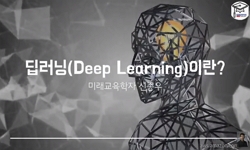Crosswalks play an important role for the safe movement of pedestrians in a complex urban environment. However, for the visually impaired, crosswalks can be a big risk factor. Although assistive tools such as braille blocks and acoustic traffic lights...
http://chineseinput.net/에서 pinyin(병음)방식으로 중국어를 변환할 수 있습니다.
변환된 중국어를 복사하여 사용하시면 됩니다.
- 中文 을 입력하시려면 zhongwen을 입력하시고 space를누르시면됩니다.
- 北京 을 입력하시려면 beijing을 입력하시고 space를 누르시면 됩니다.
https://www.riss.kr/link?id=A108982392
- 저자
- 발행기관
- 학술지명
- 권호사항
-
발행연도
2024
-
작성언어
Korean
- 주제어
-
KDC
569
-
등재정보
KCI등재
-
자료형태
학술저널
-
수록면
67-75(9쪽)
- DOI식별코드
- 제공처
-
0
상세조회 -
0
다운로드
부가정보
다국어 초록 (Multilingual Abstract)
Crosswalks play an important role for the safe movement of pedestrians in a complex urban environment. However, for the visually impaired, crosswalks can be a big risk factor. Although assistive tools such as braille blocks and acoustic traffic lights exist for safe walking, poor management can sometimes act as a hindrance to safety. This paper proposes a method to improve accuracy in a deep learning-based real-time crosswalk detection model that can be used in applications for pedestrian assistance for the disabled at the beginning. The image was binarized by utilizing the characteristic that the white line of the crosswalk image contrasts with the road surface, and through this, the crosswalk could be better recognized and the location of the crosswalk could be more accurately identified by using two models that learned the whole and the middle part of the crosswalk, respectively. In addition, it was intended to increase accuracy by creating a boundary box that recognizes crosswalks in two stages: whole and part. Through this method, additional frames that the detection model did not detect in RGB image learning from the crosswalk image could be detected.
동일학술지(권/호) 다른 논문
-
- 한국정보전자통신기술학회
- 유성무(Seongmu Ryu)
- 2024
- KCI등재
-
인터디지털 커패시터를 이용한 높은 지향성을 갖는 마이크로스트립 방향성 결합기
- 한국정보전자통신기술학회
- 한대현(Dae-Hyun Han)
- 2024
- KCI등재
-
4중 암호화 기법을 사용하여 기밀 데이터를 이미지 픽셀의 LSB에 은닉하는 개선된 기법
- 한국정보전자통신기술학회
- 정수목(Soo-Mok Jung)
- 2024
- KCI등재
-
위치 기반 지능형 사물인터넷 서비스를 위한 BLE 측위 방법에 관한 연구
- 한국정보전자통신기술학회
- 장호덕(Ho-Deok Jang)
- 2024
- KCI등재





 ScienceON
ScienceON DBpia
DBpia





